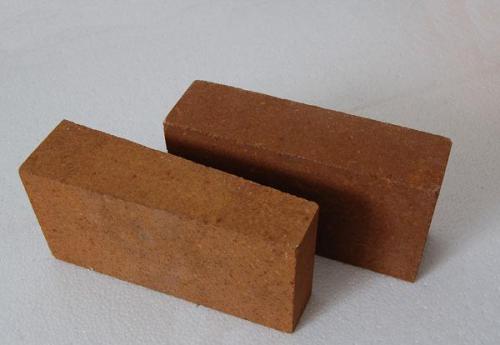Hot Product
Refractory Knowledge
Introduction to the production process of magnesia brick
Date:2020-03-12 15:42 From:Zhengzhou Sunrise Refractory Author:admin
The production process of Cheng Magnesia bricks is the basis for the production of magnesium refractory materials and even alkaline refractory materials. The production process of high-purity magnesia bricks and directly combined magnesia-chrome bricks is similar, except that the types of raw materials used, purity, molding pressure and firing temperature are different. The following mainly introduces the production process of magnesium bricks.

1 Requirements of raw materials
The main raw material for the manufacture of magnesia bricks in China is ordinary sintered magnesia. This magnesia is layered with magnesite and coke in a shaft kiln.
Calcined. Therefore, the content of SiO2 and CaO, especially SiO2, is higher than that in magnesite. The requirements are mainly
The composition and degree of sintering. The general requirement is that the chemical composition should be greater than 87% MgO, less than .5% CaO, SiO2,
The content is less than 5.0%, and the sintering should be good, the density should be not less than 3.18 g / cm3, the burning should be less than 0.3%, and no nodules
The less black blocks, the better.
2 particle composition and ingredients
The particle composition should conform to the principle of the closest packing and be conducive to sintering. Critical particle size is based on magnesia sintering degree and brick appearance rule
Depending on the size and weight, you can choose 4mm.3mm.2.5mm.2mm. Manufacture of single-size refractory bricks with critical grain size
Increase appropriately. The particle size composition is generally: the critical particle size to 0.5 mm accounts for 55% to 60%, and 0.5 to 0.088 mm accounts for 5% to
10%, less than 0.088 mm account for 35% to 40%.
In production, it is also possible to add partially crushed waste brick blanks, the amount of which generally does not exceed 15%, or during the forming process
The waste brick blank is crushed and directly mixed into the mud for molding. The binding agent adopts sulfurous acid pulp waste liquid (density 1.2 ~ 1.25 g / cln3) or MgCI2 aqueous solution (brine).
3 mixed
It is carried out in a roller mill or a sand mixer. The feeding sequence is: granules → pulp waste liquid → fine powder, and the total mixing time is not less than
10 minutes, because the amount of CaO of the raw material is limited and the sintering degree of magnesia is increased, the sleepy material process is generally canceled.
4 molding
Sintered magnesia is a barren material and has a low moisture content in the body. Generally, no overpressure waste products due to gas compression will occur.
Therefore, high-pressure molding can be used to make the density of the green body more than 2.95 g / cm3. This helps to improve the performance of the refractory bricks.
5 drying
During the drying of the body, the physical and chemical changes that occur include the two processes of evaporation of water and hydration of magnesia. Water drain
The initial stage of removal requires a higher temperature, but the high temperature will accelerate the hydration of magnesia and crack the green body. Especially in the dry
In the later period, because the effect of thermal conduction is greater than the effect of wet conduction, excessively high temperatures are not conducive to the removal of moisture. tunnel
In the dryer, the population temperature of the drying medium is generally controlled at 100 ~ 120 ° C, and the temperature of the exhaust gas outlet is generally controlled at
40 ~ 60 ° C. In order to ensure that the green body has a certain strength after drying, the green body should retain about 0.6% moisture after drying.
The waste products that often appear during the drying process are network cracks, which are mainly caused by the formation of a large amount of hydrates in the green body after molding.
However, if properly controlled, waste products generally do not appear, and the green body should be dried and fired in a fashion kiln to prevent moisture absorption and powdering.
6 fired
The firing of magnesia bricks can be carried out in an inverted flame kiln or a tunnel kiln. They have a lower softening temperature under load, and
After use, the strength of the green body is low, so the brick stack should not be too high, generally about 0.8 m.
Inquiry:
If you have any questions or good suggestions on our products and site, or if you want to know more information about our products, please write them and send to us, a representative will contact you within one business day. We guarantee that your information will not be divulged to the third party.

